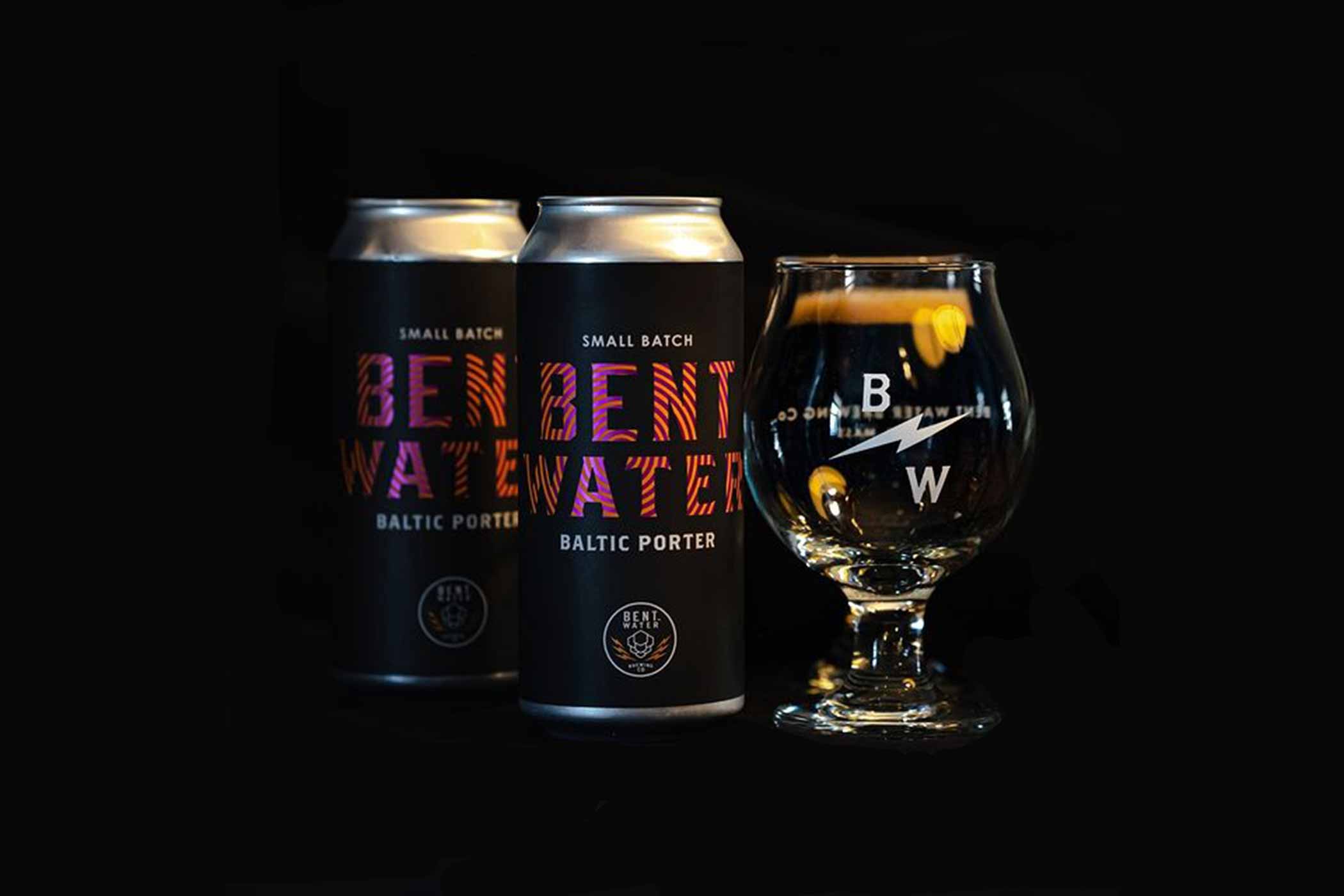
We’ve covered how craft breweries should have porters on their tap list. While the porter is a flavorful, lower-ABV, supremely drinkable beer, the Baltic porter takes everything you like about the porter and elevates it to a different level, especially since the beer falls into the lager category instead of ales. The rich, malt-forward beer is loaded with both flavor and high alcohol percentage by volume. We’ve written lately about warming beers like doppelbock and winter warmer. As the weather continues to drop, the Baltic porter could be a great option to add to your brew calendar.
But now would be the time to do it, so we chatted with experts in Baltic porter from Rockwell Beer Company and Bent Water Brewing Company to learn all there is to know about the style, the top things to be aware of when brewing it, what ABV is the sweet spot, and how long that lagering should take.
(Above photography courtesy of Bent Water Brewing Company)
What We’ll Cover in This Piece:
Affordable, Industry-Leading Brewery Software
How Experts Define Baltic Porter

Photography courtesy of Bent Water Brewing Company
Bent Water Production Manager Tony Porreca loves the style because it should have a higher ABV but drink like a low-ABV lager.
“People think dark beer has to be bitter, roasty, or sweet, but Baltic porter takes it to the other end,” Porreca says. “The maltiness shines. It’s super fun.”
Porreca adds that it has many darker flavors without going overboard.
“You got flavors like dark fruit, molasses, and candied sugar,” Porreca says. “It’s not overly roasty and chocolatey; it’s more of a nice round flavor. It reminds me of a dessert cake.”
Rockwell Head Brewer Jonathan Moxey says his love of Baltic porter goes back to when he first started brewing around 2009 when he discovered Smuttynose Brewing’s take on the style.
“That beer blew my stack,” Moxey says. “That was aspirational to me. So, when we started Rockwell and lagering, that was the driving force [behind our Baltic porter].”
Moxey thinks of Baltic porter occupying a refined corner of the larger dark beer space.
“You got the fudgy viscous motor oil [dark beer]—all of those can be bold flavors, but with Baltic porter, you have more room for delicacy and nuance while still having something bold,” Moxey says. “I’m looking for it to have licorice, tobacco, and dark, dried fruit, raisin, fig, prune, and dried cherry coming from the malt.”
Moxey adds, “I want the yeast to be clean and neutral. That comes from lower fermentation temperatures and the lagering.”
What Are the Top Considerations When Making Baltic Porter?

Photography courtesy of East Brother Beer Co.
Moxey thinks there are a couple of items to be mindful of when creating a Baltic porter.
“I think part of it is grain selection. You want to have enough character malts in there to get layers of complexity, but you don’t want it to be muddy,” Moxey says. “Everything in ours serves a specific purpose; it’s a complex malt bill with seven different malts.”
Moxey believes fermentation is another significant factor in a quality Baltic porter.
“Make sure you have a really healthy yeast pitch and oxygenate well,” says Moxey. “This beer takes a long time to get right.”
According to Moxey, Rockwell’s Baltic porter spends a month and a half in a stainless and two to four months in an oak foeder. “That extended time really pays off by smoothing off rough edges,” he says.
Moxey advises to get your Baltic porter on the brew schedule as early in the year as possible.
“If you don’t have the time to do an extended lagering,” he says, “you’re better off doing a different style.”
Porreca thinks the color is also a focal point.
“Think deep red to brown as opposed to black,” says Porreca, who recommends layering malts to give a deeper depth of flavor. “It’s really about top to bottom, to hit a strong malt bill to hit all the flavor notes.”
Porreca says to view a Baltic porter more as a lager than anything, noting, “It’s not brewed like a lager—with a giant malt bill, and big flavors—but once in there, sit on it as long as you can.”
What Is an Ideal Grist Bill for Baltic Porter?
Porreca says that a Baltic porter can be done as a single-infusion mash at 152℉ so as not to dry it out too much.
“You still want body in there,” Porreca says.
Porreca says they mostly use pilsner malt as a base and layer in a number of other grains like Munich, Carafa Special 3, and CaraMunich.
“We use Caramalts to get body and aromas of toffee and dried fruit,” he says. “We’re not reliant on one specific special malt. We try to make everything work together.”
Porreca adds, “We put a ton of Munich to get that old-school lager flavor—a lingering malt flavor. We use a little bit of Weyermann CaraAroma and a touch of Carafa Special 3 dehusked dark malt for color and not astringency and bitterness.”
Moxey says they also shoot for 152℉ and a single-infusion mash, incorporating seven malts, including pilsner, Munich, Special B, Carahell, Light English Crystal, Black, and Chocolate malt.
“It’s about fifty-five percent pilsner, twenty-two percent Munich, and then five percent or less of the other five malts,” Moxey says. “I like Special B. That helps get that dried dark fruit flavor.”
He reiterates how the Smuttynose Baltic porter inspired his recipe, along with chewing grains to see what flavor profiles they would get.
“I wanted some of that bakers’ chocolate and black licorice,” Moxey says. “I didn’t want it super caramel—that’s why we went with Carahell and Light English Crystal.”
Moxey adds, “The real workhorse is the Special B, lending a dark cherry and plum fig flavor.”
What IBUs Should You Target for Baltic Porter?

Photography courtesy of Rockwell Beer Co.
The Baltic porter leans heavily into the malt-forward flavor profile so it won’t be super bitter.
“We’re talking thirty-eight to forty IBUs total,” Moxey says. “Part of that is what allows it to be a bit more delicate, even at that higher strength.”
He adds, “It’s balanced out and there’s not too much sweetness. That extended aging in oak provides structure.”
Moxey says they throw in German Magnum hops at sixty minutes to help generate thirty-four [IBUs] and add Michigan-grown Crystal hops at fifteen minutes to get around forty IBUs.
Because of the higher ABV and gravity of its beer, Bent Water ramped up its IBUs, according to Porreca.
“This one was thirty-five IBUs,” he says. “Anything less, and we didn’t feel like we’d have that hop flavor there. Anything more would be too bitter.”
Porreca says they like to use traditional-type hops like Perle to give it a “noble-esque hop flavor” and hit it at the end with Fuggles to make the profile a little more complex.
“The hops are not the star of the show, though,” Porreca says. “Just pick the varietal that makes sense.”
What Is the Best Fermentation and Lagering Process for a Baltic Porter?
Porreca sticks to the tried and true W-34/70 lager yeast for its Baltic porter.
“I love 34/70,” Porreca says. “We put it in IPAs and all of our lagers.”
Porreca admits that Bent Water isn’t exactly a lager brewery. However, they have a decent portfolio of options in the style, which has “given us everything we need,” Porreca says.
Bent Water knocks out the Baltic porter at 52℉ and begins fermentation. Once they hit around eighty percent fermentation, they let the beer free rise to 60℉. Then, after a rest, it’s about lagering.
“All our lagers go for six weeks,” Porreca says. “If we can go more, we would. It’s all demand and it’s tank-space dependent.”
Porreca adds, “I recommend giving it as much time as you can. With our Baltic porter, we sometimes go longer. Anything under six weeks doesn’t taste as mature as it should.”
Moxey says they use the standard W-34/70 strain because “it’s a workhorse.”
“We start our lagers at 62℉ and then step it down to 52℉ over the course of ten hours,” Moxey says. “We like to use a later generation of that. We do a batch or two of pilsner with it to get it up and moving. Doing it that way, we have less time in stainless—in there, we like to get it down to lagering temp and to get past the messier high-krausen stage of fermentation.”
Moxey adds, “This way, we can use less yeast, and it gets faster ferment times. That’s been beneficial, and we haven’t seen any estery or off flavors that would be detrimental from a higher temperature start.”
Moxey says that when they approach terminal gravity, they opt to step the temperature down to 32℉ and move it to the foeder.
“We want it to be just about done by the time it goes to the foeder,” Moxey says.
With all these steps, Moxey says the total time they would like to give their Baltic porter is at least four months.
“It’s in stainless for one to one and a half months,” Moxey says. “Then, as much time as we can allow it in the foeder.”
He adds, “We typically try to have this out late November, early December. If I can get it started in August, that’s ideal.”
What Is the Target ABV for a Baltic Porter?
Think higher.
According to the Beer Judge Certification Program, the style should fall anywhere from 6.5% ABV to 9.5% ABV, though they note that most of the iterations fall between 7% ABV and 8.5% ABV. Despite that, Porreca likes Bent Waters’ versions even higher.
“Ours came in at 10% ABV,” Porreca says. “I think that might be on the higher end. But I do like it from 8% ABV to 11% ABV.”
Porreca notes that once you get to those higher ABV, you will worry more about the unfermentables.
“It’s all about recipe development,” he says. “We thought that would sit nicely with the flavor we had.”
Moxey believes the sweet spot for the ABV really depends, but he prefers his ABV to be between 8% and 10%.
“But it depends on the individual brewer’s ability to brew beer with a clean alcohol profile,” Moxey says. “If you can do it high and have it not taste strong, go for it. If you can’t do that, I would have it 6% ABV to 8% ABV.”
Moxey adds, “Personally for me, I wouldn’t want it less than 7% ABV.”
Two Great Versions of a Baltic Porter
Bent Water made a 9.5% ABV Baltic Porter as part of a small batch series. Porreca says that although the style isn’t very popular, they are fans.
“It’s got the drinkability of lager, super smooth, but a lot more fun and exciting,” Porreca says. “It shows what lager yeast can do.”
Rockwell Beer’s Baltic porter, Kazimierz, which won gold at GABF—Moxey says that gold medal spent three months in the foeder—falls at 9.2% ABV. Moxey says there are many world-class imperial stouts in the St. Louis area, so they found a nice pocket for dark beers with their Baltic porter.
“We still like drinking strong dark beers, so instead of adding another big viscous imperial stout to the market, we wanted to make a different style of beer,” Moxey says. “Something you would want to drink eight to sixteen ounces instead of five ounces.”
Moxey adds, “With Kazimierz, you get smooth alcohol flavor that doesn’t fatigue the palate.”



